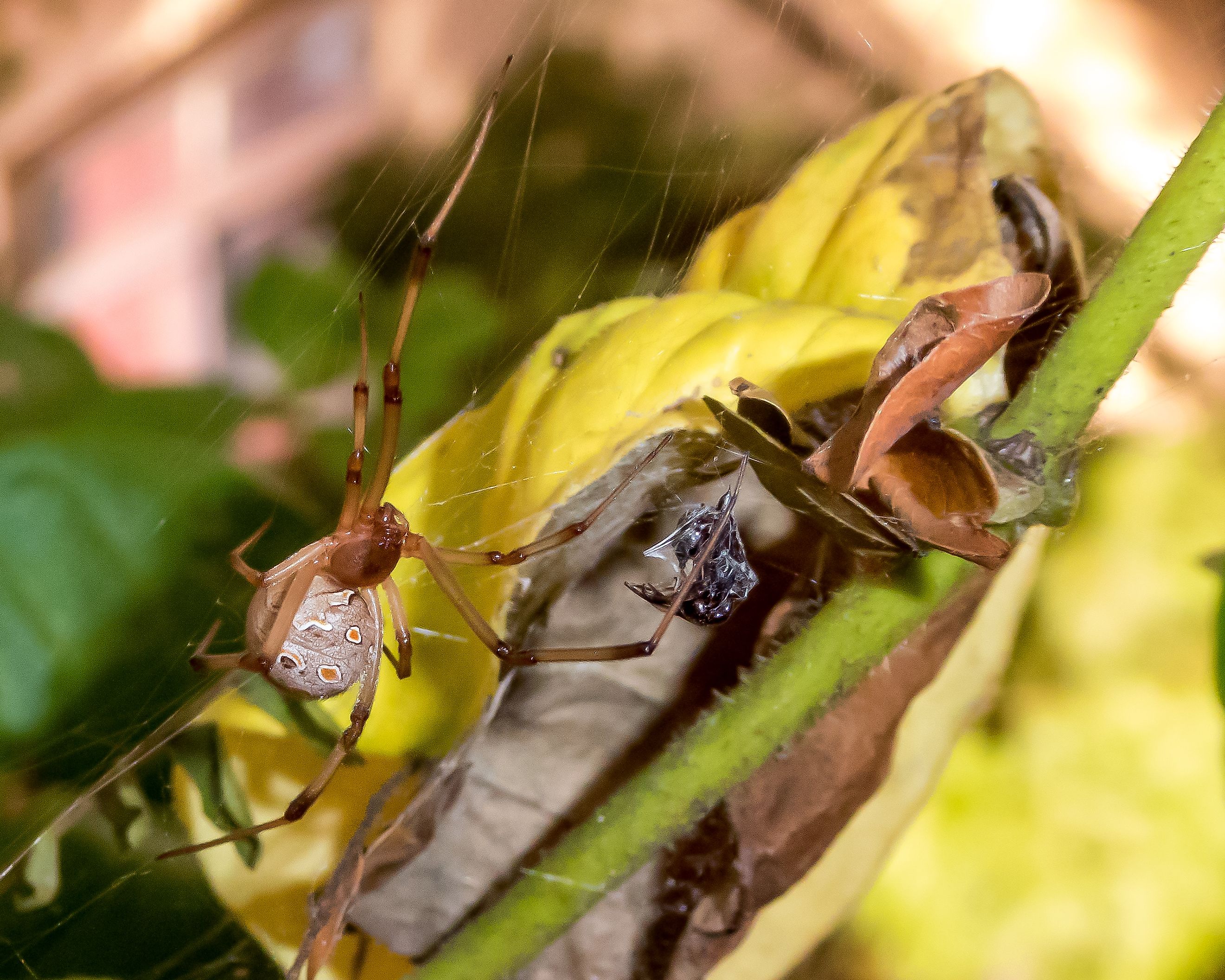
4 Most Venomous Spiders in Louisiana
The Pelican State is a beautiful state known for its vibrant culture, delicious Cajun cuisine, and natural beauty. There’s another side to Louisiana that many visitors don’t know about—the presence of venomous spiders. These venomous spiders can be found throughout the state and are a threat to anyone who comes into contact with them. Spiders are typically more common in rural or suburban areas of Louisiana, but they can be found in urban areas, particularly in dark, undisturbed places like attics, garages, and sheds. New Orleans is home to several highly venomous species of spiders, like the brown recluse, the brown widow, and both the southern and northern black widow spiders.
Spiders have long been cast as monsters and villains in films like “Arachnophobia” and the 1950s cult classic “Tarantula” to Marvel’s Natasha Romanoff, a.k.a. Black Widow. Despite their bad rap, spiders play a significant role in managing the pest population. With its warm, moist climate, Southern Louisiana attracts all kinds of bugs, including numerous spiders. Most types are not poisonous, but four spiders in southern Louisiana are dangerous to humans.
Brown Recluse (Loxosceles Reclusa)
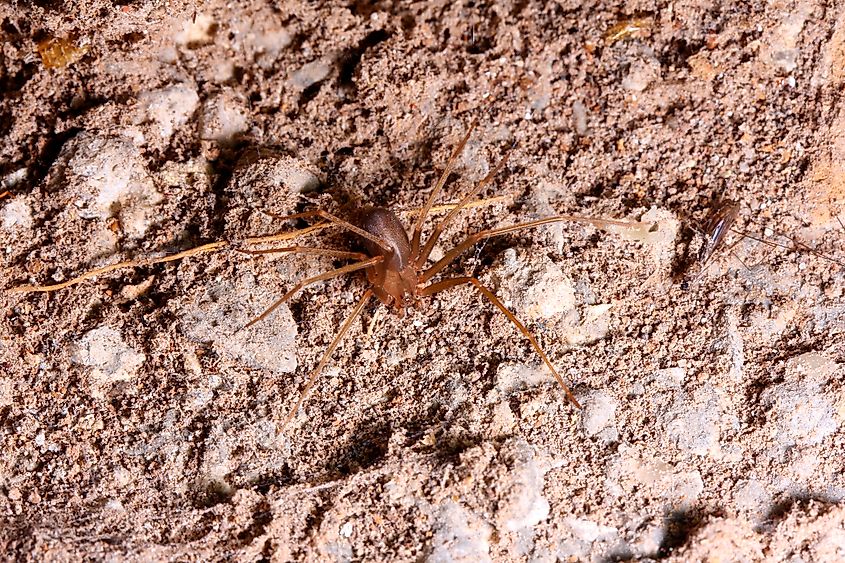
Brown recluse spider in habitat.
The brown recluse spider is the most widespread brown spider but is usually found only in the South and Central United States. It is one of the most venomous spiders in Louisiana, common in the state's northern half, roughly north of a line through Alexandria, and more rare in southern Louisiana. As their name implies, Loxosceles reclusa likes to hide in dark, dry places that are quiet, such as woodpiles, sheds, garages, cellars, composting cardboard (which resembles rotting wood), and other secluded areas. They also hide in closets, drawers, baseboards, and behind wall art.
The brown recluse is typically different shades of brown, though they can range from white to black to gray. These spiders have a distinctive marking near their head resembling a violin, which has given way to names like brown fiddler, violin spider, and fiddleback spider. They avoid contact with humans, often choosing to run rather than fight. Without an escape route, they may feel threatened and bite.
Loxosceles reclusa have venom that can cause severe damage to skin tissue (necrosis), as well as other symptoms such as fever, chills, and even death in severe cases. If an individual suspects a brown recluse has bitten them, they should seek medical attention.
Brown Widow (Latrodectus Geometricus)
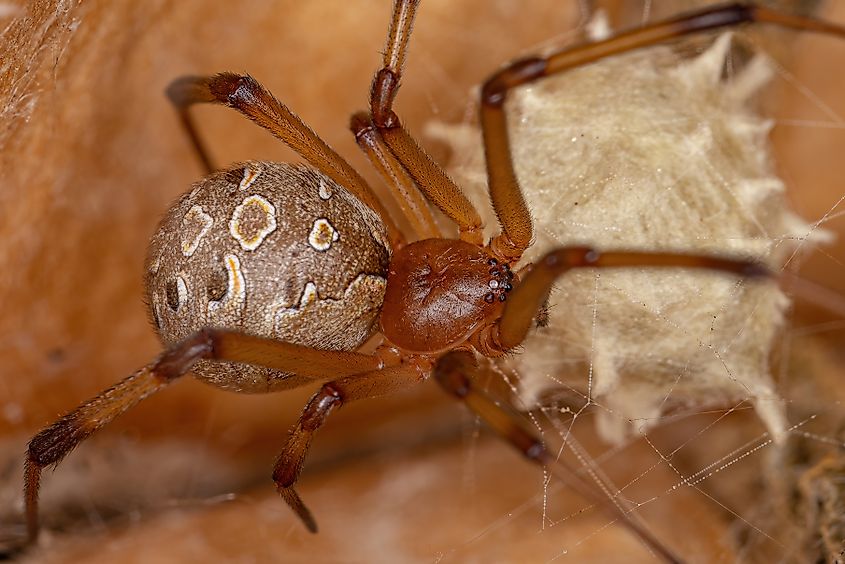
Female Adult Brown Widow of the species Latrodectus geometricus.
Latrodectus geometricus are not native to the US. They are thought to have originated in South Africa but first appeared in Louisiana during the early 2000s; by 2005, the brown widow had become the most common widow spider in some urban areas. Located worldwide, they were once only prevalent in the continental United States, in particular peninsular Florida. Today, brown widows live in multiple locations within the Greater New Orleans area.
They can be identified by their cream-colored abdomen. Tan to dark brown in color, their hourglass marking is similar to the red hourglass on the underside of the abdomen of the black widow, but is orange. Brown widows thrive in various situations and often nest around buildings. They prefer dark areas, like underneath patio furniture and playground equipment. Prime areas for web building include empty containers like plant pots, buckets, mailboxes, and under rims of outdoor garbage cans.
Bites are rare, often resulting from accidentally trapping the adult females against the skin. In rare cases of bites, venom injected is less than with other species. It usually results in milder symptoms because the brown widow cannot inject as much venom as its larger relatives. The telltale symptoms of a brown widow bite are pain and a red mark at the bite site, but if strong pain, muscle cramps, and nausea accompany the bite, medical attention is required. Males of the species are no threat to humans due to their smaller sizes.
Northern Black Widow (Latrodectus variolus)
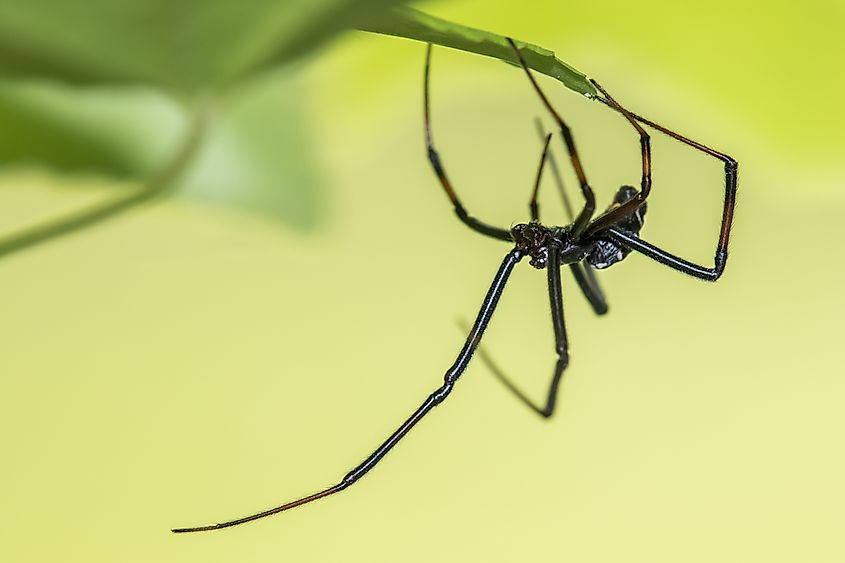
Northern Black Widow, male
Northern and southern black widows live in many of the same areas across the southern states, including Louisiana. They are native species but have been largely displaced by the introduced brown widow, at least in urban areas. Both northern and southern widows are commonly found in rural areas. Old farmhouses, barns, wood piles, ditches, and storage sheds are classic black widow habitats outside; inside homes, they hide in dimly lit locations like dark corners, under stairs, basements, and cluttered areas.
Latrodectus variolus are a shiny jet-black, with a bright-red hourglass marking on the underside of their abdomen. The hourglass of the northern black widow is typically incomplete, with the bottom and top half separated. The bottom half is typically more rounded than triangular.
Northern black widow bites pose a significant medical threat that requires prompt treatment. Happily, bites are rare and typically result from accidentally contacting females after reaching in dark places. The spiders will usually retreat, but they can deliver a potent venom. Serious symptoms include abdominal cramps and, in severe cases, respiratory distress. Children and the elderly are most at risk if bitten. If a northern black widow bite is suspected, medical attention is required.
Southern Black Widow (Latrodectus mactans)
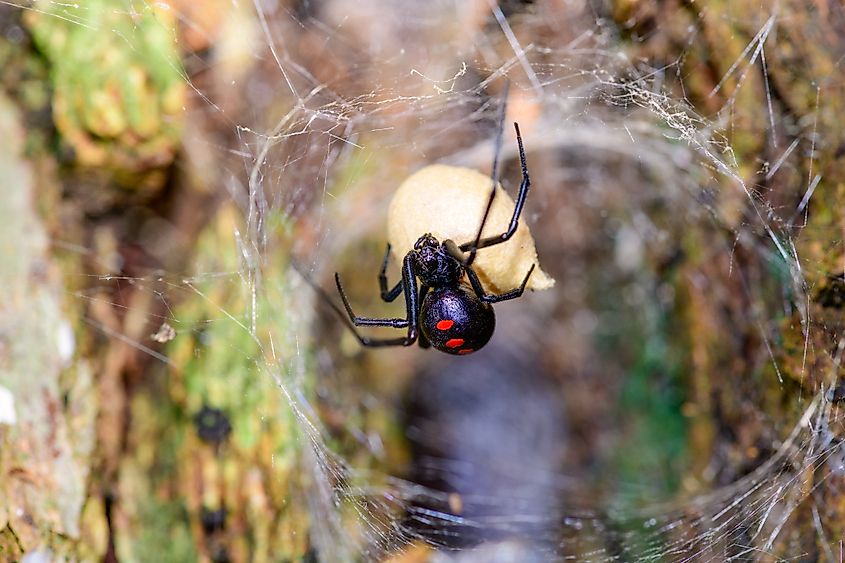
South black widow spiders often seek out dark, sheltered areas. They thrive in outdoor areas like woodpiles, hollow tree stumps, and small animal burrows. Inside the home, they hide in garages, crawl spaces, attics, and stone walls like chimneys. The humidity and warmth of Louisiana create a perfect habitat for them around homes and gardens.
Female Latrodectus mactans are identified by the distinctive red hourglass marking on their abdomens. The southern black widow has a complete hourglass marking, while the northern has a "broken" hourglass, with the thinner middle section often being disconnected or having a series of red dots. The females are larger than the males, and the males are typically brown with white markings.
The southern black widow has a nasty reputation, as they can be pretty aggressive. The myth that female southern black widows always eat their mate after reproduction doesn't help improve their reputation either. Only the bite of an adult female southern black widow spider poses a threat; male southern widows do not have potency. The female’s venom affects the nervous system, and the bite might leave two fang marks. A bite may feel like a mild bee sting at first, but soon, the neurotoxin takes effect with symptoms including stiff muscles, nausea, vomiting, sweating, swollen eyelids, and more. Severe symptoms like these require immediate medical help, typically involving symptom management, but an antivenom is available for severe cases.
Summary
Louisiana’s warm, humid climate and diverse geography create the perfect environment for four venomous spiders: the brown recluse, brown widow, northern black widow, and southern black widow. The state's mix of dense forests, wetlands, and urban areas provides plenty of dark, sheltered spots like woodpiles, barns, garages, and attics for these spiders to thrive. The moisture and heat from the Gulf Coast make Louisiana a comfortable habitat, allowing them to remain active year-round.











